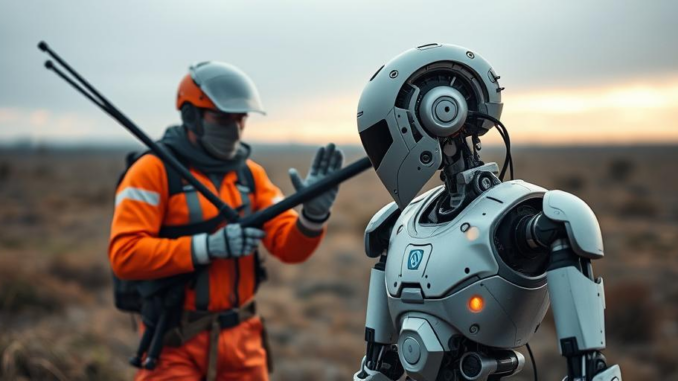
Summary
Huntsman Cancer Institute is revolutionizing cancer treatment with its cutting-edge robotic surgery program. The institute is the first in the Mountain West to offer single-port robotic surgery and the first in Utah to utilize the advanced da Vinci 5 system. These technologies enhance precision, minimize invasiveness, and accelerate patient recovery, marking a significant advancement in cancer care.
Secure patient data with ease. See how TrueNAS offers self-healing data protection.
Main Story
The Huntsman Cancer Institute (HCI) really is a pioneer, you know? They’ve firmly established themselves as leaders in robotic surgery, constantly pushing the envelope to give patients the best, most effective cancer treatments. It’s clear they’re all-in on cutting-edge tech, and that’s obvious in a couple of big achievements. First, they’re the first cancer center in the Mountain West to offer single-port robotic surgery. Second, they were the first in Utah to implement the da Vinci 5 surgical system. These aren’t small steps; they’re huge leaps forward in the battle against cancer, offering patients a less invasive, more precise, and, ultimately, more effective way to handle surgery.
In January of 2024, HCI announced, with justifiable pride, the arrival of the first – and only – single-port robot in the Mountain West. This one is specifically designed for head and neck cancer patients. It’s a real game-changer, completely transforming how we approach these complex cases. Before it’s approval for robotic use, these types of surgeries were often, frankly, brutal – very invasive, and really challenging for both the patient and the surgeon. Now, with this single-port robot and it’s highly specialized instruments, surgeons can operate with incredible precision, even in very tight spaces. This, in turn, expands treatment options for more patients. It’s really quite impressive.
Further demonstrating their innovative spirit, HCI also acquired not one, but two da Vinci 5 robotic surgical systems. I mean, talk about a commitment! This system takes surgical precision and control to a new level, which, of course, translates into safer and better patient care. The da Vinci 5 system even provides surgeons with force feedback technology. They can actually feel the tissues they are working on; that tactile information boosts their control, minimizing the risk of complications. Ultimately, it leads to better surgical results. Imagine, you’re operating, and your hands can feel what’s happening inside. It really is quite amazing.
And it’s not just about shiny new tech. HCI also has a truly comprehensive robotic surgery program. They have a team of 38 highly skilled robotic surgeons and, crucially, a robust training program to continually enhance their expertise. Since the program began in 2005, they’ve done over 10,000 robotic-assisted procedures, and the numbers just keep going up. This experience and expertise, that’s what really makes a difference to patients with shorter hospital stays, faster recoveries, and better outcomes overall. It’s not just about the machines, it’s about the people who are using them.
That being said, their commitment to patients extends beyond the operating room. It’s a holistic approach. HCI uses a multidisciplinary team of specialists in oncology, radiation, hormone therapies, and other fields. This team collaborates to make personalized treatment plans that fit each patients’ unique needs, which is incredibly important. They also provide a wide array of support services to help patients and their families cope with the challenges of cancer – from diagnosis right through to treatment and beyond. You know, that support is just as crucial as the medical treatment itself.
Looking ahead, HCI isn’t resting on its laurels. They plan to keep expanding their robotic surgery program by adding more platforms, training more surgeons, and recruiting even more specialists. This dedication to innovation and patient care will certainly keep shaping the future of cancer treatment, not just in the Mountain West, but throughout the country. And they are exploring how to integrate technologies like AI and machine learning with robotic surgical systems, which hold great promise for further improving precision, enhancing outcomes, and personalizing cancer care even more. Honestly? As HCI keeps striving for excellence in robotic surgery, they’re paving the way for a future where cancer care is more precise, effective, and patient-centered, and that’s something we can all get behind. It’s a great example of how technology, used thoughtfully, can make a real difference in people’s lives.


So, they’ve got two da Vinci 5 systems, have they? Talk about keeping up with the Joneses in the world of robotic surgery. I guess one is just not cutting it anymore.
That’s a great point! Having two systems really speaks to the institute’s commitment to ensuring patients have access to this cutting-edge technology, but more importantly it also allows for a robust training program so that they are not just implementing new equipment, they are developing talent as well.
Editor: MedTechNews.Uk
Thank you to our Sponsor Esdebe – https://esdebe.com
So, they can feel the tissues now, like some sort of super-powered surgeon? Does that mean they’re going to start giving high-fives to internal organs?
That’s a funny thought! The force feedback tech is definitely a game changer, giving surgeons a better sense of what they’re working with. Hopefully, it just leads to more precise surgeries and not over-enthusiastic organ greetings!
Editor: MedTechNews.Uk
Thank you to our Sponsor Esdebe – https://esdebe.com
Two da Vinci 5 systems? Are they planning a robotic dance-off to determine which surgeon gets bragging rights? I wonder if they offer backstage passes to watch the robot wars, maybe with a pay-per-view option?
That’s a fun thought! Maybe we could stream the training sessions. While there won’t be a dance-off, the collaborative environment is great to see, with surgeons learning from each other’s techniques on the da Vinci 5. Ultimately, it’s about better outcomes for patients!
Editor: MedTechNews.Uk
Thank you to our Sponsor Esdebe – https://esdebe.com
With 38 surgeons already, how does HCI plan to manage the increased complexity of incorporating AI and machine learning into robotic surgery training and ongoing professional development? Will this require new training paradigms or certifications?